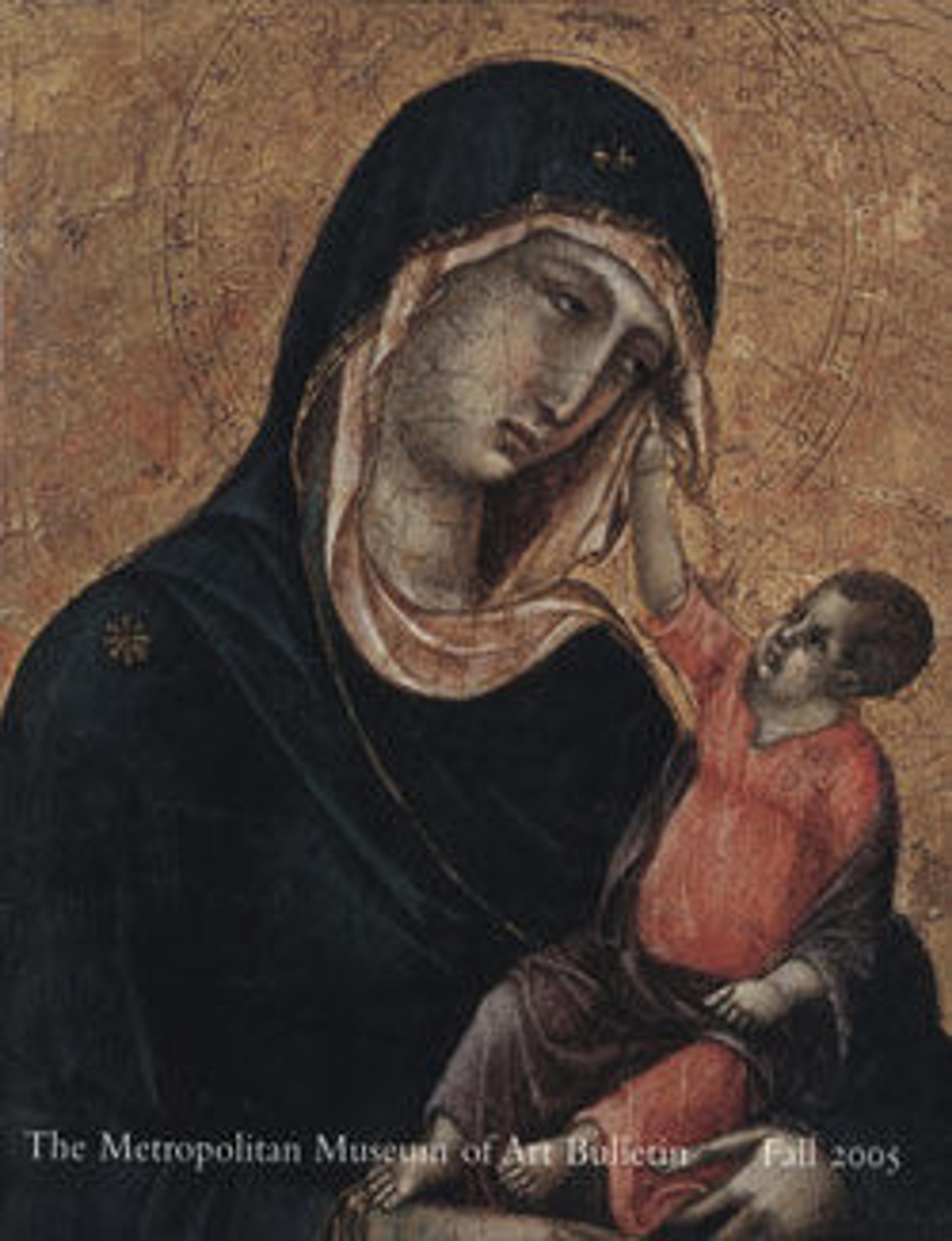Fragment of textile with horses
This vertical strip of silk-weave fabric has a repeating pattern of winged horses in pearl roundels. The horses alternate facing left and right, with outstretched wings and knotted tails. Each wears a pearl band with fluttering ribbons around the neck, a ball-and-crescent headdress supported by a shaft, and ankle fillets. The roundels’ pearl border is interrupted at the top, bottom, and sides by concentric squares. In the background, stylized blossoming trees are flanked by floral elements enclosed in a motif with a rounded top.
This textile motif is typically Sasanian and similar patterns appear on the rock reliefs of Taq-i Bustan, Iran. Winged horses are also featured on Sasanian metalwork and stamp seals, and the ball-and-crescent headdress is comparable to royal crowns depicted on Sasanian coins. Sasanian textiles were exported throughout the ancient world and their manufacture and iconography reflect the artistic transformations and adaptations that occurred along the Silk Road. Their major centers of production, however, remain unknown.
This textile motif is typically Sasanian and similar patterns appear on the rock reliefs of Taq-i Bustan, Iran. Winged horses are also featured on Sasanian metalwork and stamp seals, and the ball-and-crescent headdress is comparable to royal crowns depicted on Sasanian coins. Sasanian textiles were exported throughout the ancient world and their manufacture and iconography reflect the artistic transformations and adaptations that occurred along the Silk Road. Their major centers of production, however, remain unknown.
Artwork Details
- Title: Fragment of textile with horses
- Period: Sasanian
- Date: ca. 5th–7th century CE
- Geography: Central Asia
- Culture: Sasanian
- Medium: Silk textile
- Dimensions: 42 × 7 1/2 in. (106.7 × 19.1 cm)
- Credit Line: Purchase, Friends of Inanna Gifts and Rogers Fund, 2004
- Object Number: 2004.255
- Curatorial Department: Ancient West Asian Art
More Artwork
Research Resources
The Met provides unparalleled resources for research and welcomes an international community of students and scholars. The Met's Open Access API is where creators and researchers can connect to the The Met collection. Open Access data and public domain images are available for unrestricted commercial and noncommercial use without permission or fee.
To request images under copyright and other restrictions, please use this Image Request form.
Feedback
We continue to research and examine historical and cultural context for objects in The Met collection. If you have comments or questions about this object record, please contact us using the form below. The Museum looks forward to receiving your comments.
